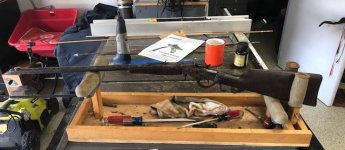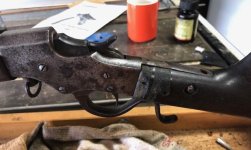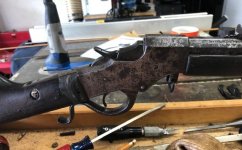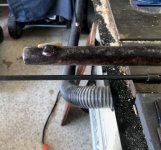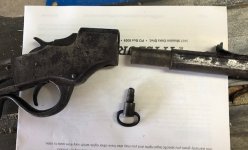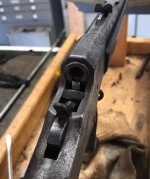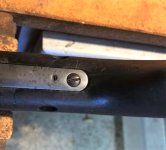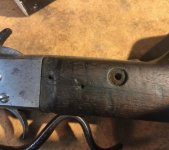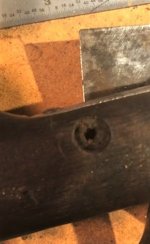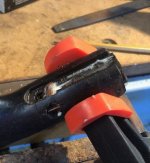As part of a trade, I came up with a Steven's Favorite in .32 Long with a half octagon barrel.
Bore appears to be dirty but not badly pitted.
Rifle is complete and is operable. Stock was repaired a long time ago. It is fairly solid but the repair is quite obvious. Butt plate is broken. I have seen these at gun shows in better condition but passed them by because of the unavailability of ammunition.
I traded about 300.00 worth of tools for this, a percussion double barrel shotgun and two junk revolvers. (Anyone who has been around here for more than three years will remember how much I love junk.)
I would be happy for your observations, advice, wisdom, on this piece.
Bore appears to be dirty but not badly pitted.
Rifle is complete and is operable. Stock was repaired a long time ago. It is fairly solid but the repair is quite obvious. Butt plate is broken. I have seen these at gun shows in better condition but passed them by because of the unavailability of ammunition.
I traded about 300.00 worth of tools for this, a percussion double barrel shotgun and two junk revolvers. (Anyone who has been around here for more than three years will remember how much I love junk.)
I would be happy for your observations, advice, wisdom, on this piece.

